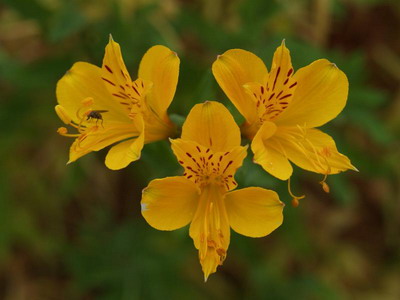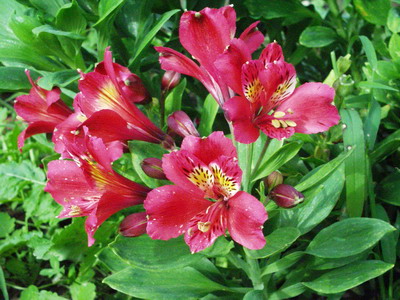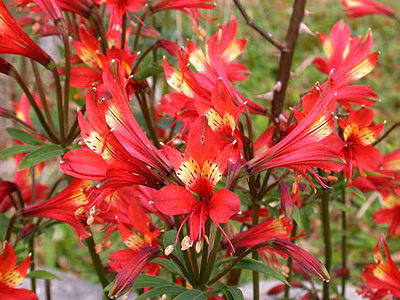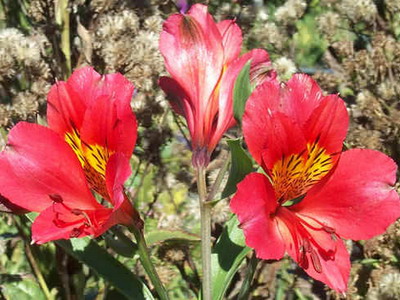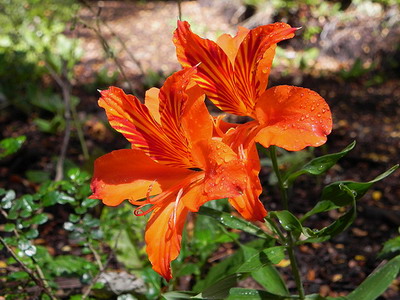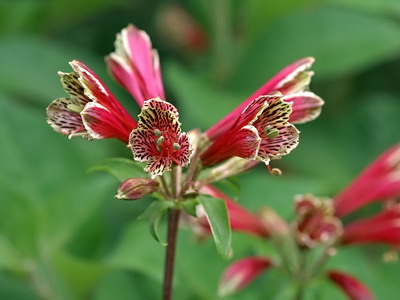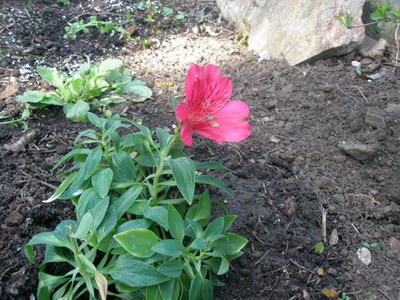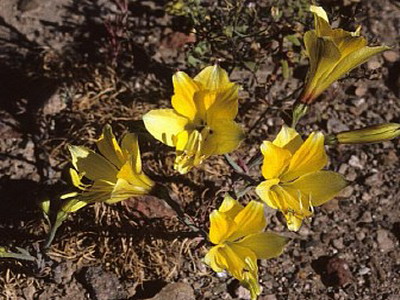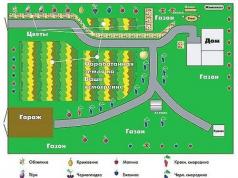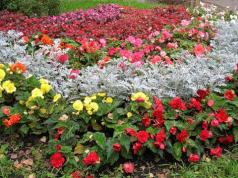The alstroemeria flower is similar to a miniature lily and is very often used in bouquets and arrangements in the cut flower trade. It is a South American genus of 50 plant species, mostly found in the cold mountain regions of the Andes, commonly known as the Peruvian or Parrot Lily, and the Inca Lily.
Photo and description of the alstroemeria flower
Alstroemeria flower is a slightly zygomorphic (bilaterally symmetrical) flower with 3 sepals and, in most cases, 3 striped petals. Sepals and petals are similar in color and texture, meaning no dense green sepals. She has 6 stamens and an unbranched column. Ovary is inferior with 3 carpels. Alstroemeria flowers are more like grass, in which the veins on the leaves rise upward, but do not branch out. This can be seen, among other things, in iris and lilies. Alstroemeria leaves are turned upside down. The leaf is twisted as if it were coming off the stem, so that the base is turned up.
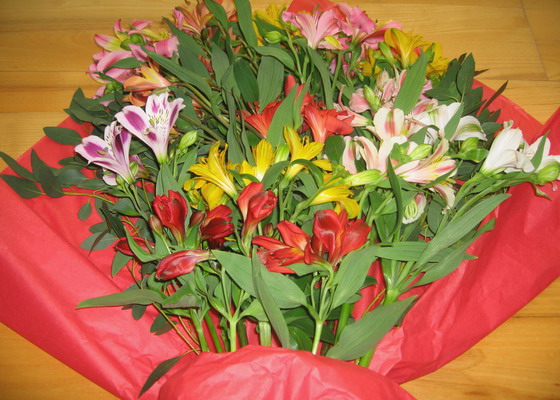
A bouquet of alstroemeria flowers in the photo
If you look at the stem of alstroemeria, you can sometimes see a contour with a spiral growth, which is associated with the production of new cells in a spiral sequence, this determines the direction of movement of the apex.
In case the soil is very hot (above about 22 degrees Celsius), the Alstroemeria plant concentrates on the production of larger tuberous roots due to flowering shoots. In some cases, this can lead to extremely undeveloped rods without flowers.
Common types and flowers of alstroemeria
Alstroemeria golden (Alstroemeria aurea)... This plant with flowers of orange color, originally from Chile, reaches a height of 90 cm. From it they create hair decorations for special occasions in flower salons.
Alstroemeria Peruvian(Alstroemeria aurantiaca)... It is also called the Peruvian Lily. Withstands very well low temperatures, it can be grown outdoors.
Brazilian lily(Alstroemeria caryophyllacea)... Its height reaches approximately 2 meters.
Bloody alstroemeria (Alstroemeria haemantha)... Differs in fleshy roots, in the inflorescence there can be up to 15 flowers.
Alstroemeria ligtu (Alstroemeria ligtu)... This variety was developed in Great Britain at the beginning of the 20th century. These plants die off immediately after flowering.
Alstroemeria is pretty (Alstroemeria psittacina)... It grows up to 60 cm, has branchy stems and tuberous roots.
Parrot lily (Alstroemeria pulchella)... It grows quickly in good weather conditions, becoming a weed that is difficult to eradicate.
Growing alstroemeria
It should be planted in a well-drained area of soil in sunny weather. Add a small amount of organic fertilizer to the planting hole. Place the plants no deeper than the level they would be if they were growing in containers.
Plant the plants 30 cm apart. Mulch with a 7.5 cm layer of organic compost around the plants except at the tops. Water thoroughly, completely moistening the soil.
What kind of care is required for alstroemeria?
Cut off old flower stalks with garden shears. In early spring, mulch with a thickness of 7.5 cm around the plants with organic fertilizer, except for the tops. Water weekly with abundant water until the soil is completely moistened, especially in summer when there is no rain.
Alstroemeria does not require much attention when leaving. During the first year, it blooms slightly. A tuberous plant will be viable with proper care.
- Alstroemeria should be planted in spring or late autumn in a sunny area with an interval of 30 cm between plants, and bulbs at a depth of 20 cm.
- Choose a sandy or clayey land plot with well-drained soil. The soil pH range should be between 5.5 and 7. Before planting the bulbs, add 7 or 8 cm of compost to the soil.
- Water the plant 1 inch (2.5 cm) every week to keep the soil moist. Check it daily to avoid complete drying out.
- Spread the mulch in a layer of 7.5 cm around the plant to retain water.
- Apply a balanced fertilizer identical to 6-6-6 NPK in the appropriate dosage according to the instructions. Fertilize once in spring and summer, do not fertilize in winter.
- Cut the shoots 7.6 cm above the ground after the plant has stopped blooming.
Other interesting facts
- Alstroemeria flower blooms in late spring or early summer.
- Alstroemeria flowers grow in orange, pink, purple, red, yellow, white or orange-pink tones.
- It was named after the Swedish botanist Klas von Alstroemer, a student of the great botanical classifier Linnaeus.
- Most modern hybrids are reproduced in the laboratory.
- Many hybrids were bred and about 190 varieties with different marks and colors: from white, golden yellow, orange; to apricot, pink, red, purple and lavender.
- These plants do not emit a scent.
- They can stand in a vase for about two weeks.
- Not all Alstroemeria have striped petals.
- The growth of flowers stops if they get very hot.
- Alstroemeria symbolizes wealth, prosperity and good luck. She is also the flower of friendship.

